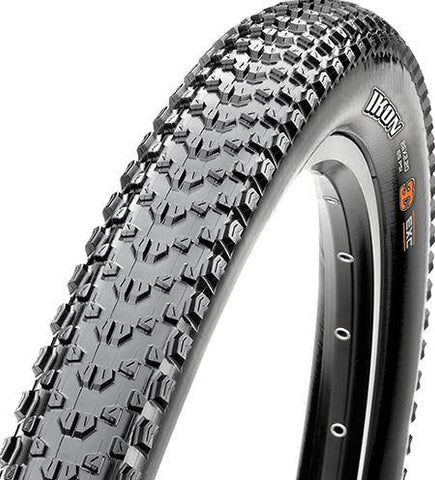Mountain biking is an exhilarating and adventurous sport that requires a great deal of skill, experience, and the right equipment. One of the most important components of any mountain bike is your tires. The type of tire you choose for your mountain bike will depend on the terrain you are riding on and the type of riding you plan to do. TLDR: Nobby tires and grippy compounds for harder riding, smoother tires for cross country rides. But here we will take a deeper dive into what makes those rubber circles so important in the bike equation.
The first thing to consider when choosing a mountain bike tire is the terrain you will be riding on. If you plan to ride on rocky, loose, or technical terrain, you will need a tire with a more aggressive tread pattern (bigger nobbies). These types of tires have large, chunky knobs that provide maximum traction and grip on loose or uneven surfaces. They also tend to be wider than other tires, providing a more stable base for your bike on rocky terrain. To showcase a tire, the shop favorite big hitting downhill/enduro tire is the Maxxis Assegai. It provides an exceptional amount of grip, excellent side lugs for cornering, and doesn't compromise much in the way of rolling speed.
On the other hand, if you plan to ride on smoother, flatter terrain, you can opt for a tire with a less aggressive tread pattern. These tires have smaller knobs that are closer together, allowing for a smoother ride on hard-packed dirt or pavement. They are also narrower than other tires, which reduces rolling resistance and improves speed. Because Maxxis is the largest tire brand that we carry, some popular options for less aggressive tread are on the Ikon and Rekon. These 2 tires are exceptional at keeping the pace fast while not compromising much on grip.
The second factor to consider is the type of riding you plan to do. If you are an aggressive rider who enjoys downhill or enduro-style riding, you will need a tire with a more aggressive tread pattern. These tires are designed to handle the high speeds and intense terrain associated with these types of riding. They provide maximum grip and stability, allowing you to tackle even the toughest terrain with confidence.
However, if you are more of a cross-country rider who prefers smooth, flat trails, you can opt for a tire with a less aggressive tread pattern. These tires are designed for speed and efficiency, providing a smooth ride with minimal rolling resistance. They are also lighter than other tires, which can improve your overall performance on the trail.
Finally, it's important to consider the trade-off between grip and rolling speed when choosing a mountain bike tire. Tires with a more aggressive tread pattern provide maximum grip and traction on sketchy trails, but they can also be slower and less efficient on smooth terrain (i.e. when pedaling). Tires with a less aggressive tread pattern provide a smoother ride with less rolling resistance, but they may not provide as much grip and stability on technical terrain.
Much like many things in the cycling industry, its a trade off. Some good rules of thumb are to have a grippier tire in the front than in the back, this will account for your weight bias being further back while going downhill, and help prevent the dreaded front tire washing out. Now earlier I mentioned that there is a trade between rolling resistance and grip, do not get this confused with top speed. While a downhill tire will have more resistance than an XC tire, you can still reach the same speeds, the DH tire will just be a tad slower to get there. There are also many tire combinations to try, such as the classic DHF and DHR, or Dual Assegai for maximum grip. For the XC folks, the Ikon and Rekon make a great duo, or even an Aspen and Ikon for something a bit quicker.
A few exceptions to the rule exist, however. Dirt jumping, or if you predominantly ride flow trails, you will not need you to push the limits of grip in the way of tires. You would be fine with an intermediate tread pattern and grip. Dirt jumping often sees nearly slick tires.
Lastly, a lot of tires come with tread compounds and tire casings, most of which are self explanatory. They can range from a super grippy compound, such as Maxxis MaxxGrip, or a faster rolling compound, Maxxis MaxxSpeed. Or tire casings that will help to resist sidewall puncture, such as Maxxis' EXO, EXO+, Double Down, and DH casings. Each one gets heavier as you get stronger sidewalls, so if you pedal a lot, it may be better to go for a lighter casing.
In conclusion, choosing the right mountain bike tire is essential for ensuring a safe and enjoyable ride. Consider the terrain you will be riding on and the type of riding you plan to do when selecting a tire. If you are an aggressive rider who enjoys technical terrain, opt for a tire with a more aggressive tread pattern. If you are a cross-country rider who prefers smooth trails, opt for a tire with a less aggressive tread pattern. And remember, there is always a trade-off between grip and rolling speed, so choose a tire that balances both factors to meet your individual needs.







